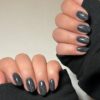Have you ever looked in the mirror and wished you could refresh your skin’s appearance? Whether it’s due to sun damage, acne scars, or the natural ageing process, many of us are on the lookout for ways to give our skin a new, revitalized look.
Table of Contents
What is Skin Resurfacing?
Skin resurfacing is a skincare treatment designed to remove the upper layers of the skin to encourage the growth of new, healthier skin. It’s like giving your skin a chance to reset and start anew. The process can be done using lasers, chemicals, or physical methods like microdermabrasion, each suited for different skin types and goals.
Why Consider Skin Resurfacing?
The benefits of skin resurfacing are many, but here are a few that might be of interest to you.
Smoother Texture
It helps smooth out the texture of the skin, making it soft and more even.
Tone Enhancement
It can reduce the appearance of dark spots and redness, leading to a more even skin tone.
Scar Reduction
Especially beneficial for those with acne scars, it can significantly reduce their visibility.
Youthful Appearance
By promoting new skin growth, it helps in reducing the appearance of lines and wrinkles.
You May Like: Glass Skin: The Beauty Trend You Should Know About And How To Achieve It
Types of Skin Resurfacing Techniques
Chemical Peels
This technique uses a chemical solution to peel away the top layers of skin. It ranges from mild peels like alpha-hydroxy acids (AHAs) to more intense ones like trichloroacetic acid (TCA).
Laser Resurfacing
Here, concentrated beams of light remove damaged skin layer by layer. There are two main types: ablative lasers, which are more intense and remove layers of skin, and non-ablative lasers, which target the underlying skin tissue without removing the top layer.
How Laser Resurfacing Works
According to CleveLandClinic, There are two forms of laser resurfacing. First, there’s carbon dioxide (CO2) and erbium lasers. These lasers create a uniform injury to your skin in the treatment area. The other form of laser resurfacing is called fractionated CO2 laser treatment. Fractionated CO2 laser resurfacing involves using the laser to drill numerous narrow columns of holes deep into the layers of your skin, but with the surrounding skin remaining untreated and intact.
Dermabrasion and Microdermabrasion
These methods involve mechanically scraping (dermabrasion) or exfoliating (microdermabrasion) the skin to improve its appearance.
Choosing the Right Procedure
The choice of procedure will largely depend on your skin type, the issues you want to address, and how much downtime you can afford. It’s always best to consult with a dermatologist or skincare specialist who can assess your skin’s condition and recommend the most suitable treatment.
What to Expect During the Treatment
During the procedure, you might feel a tingling or burning sensation, but this is usually managed with local anaesthesia or numbing cream. Post-treatment, your skin might appear red and feel sensitive, similar to a sunburn. These effects typically subside within a few days to weeks, depending on the intensity of the treatment.
Post-Treatment Care
Taking care of your skin after resurfacing is crucial for achieving the best results. Keep your skin moisturized, avoid direct sunlight, and follow any specific instructions your doctor might give. This will help your skin heal better and faster, revealing more beautiful, youthful-looking skin beneath.
Final Thoughts
Skin resurfacing could be your pathway to not just looking better, but feeling more confident in your skin. Whether it’s chasing away the marks left by past acne or just wanting to refresh your skin’s overall appearance, resurfacing offers a promising solution to those looking to enhance their skin’s health and vitality.
Photo Credit: GETTY

























